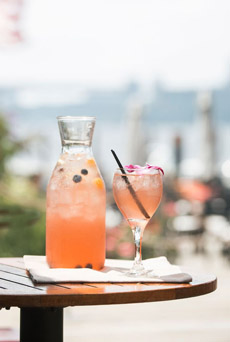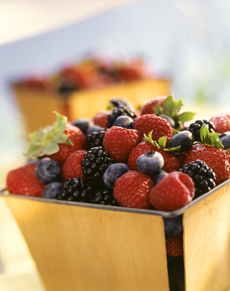TIP OF THE DAY: Rosé Sangria (Think Pink!)

|
We started the summer season with a rose tasting party, and we’re ending it more quietly, with pitchers of rose sangria. Easy to make, easy to drink, we have a pitcher in the fridge all weekend. RECIPE: ROSÉ SANGRIA Ingredients For 12 Cups †Use equal amounts of agave or honey, but half as much agave as sugar. Agave is twice as sweet. Always add a portion, taste, and continue to add until the desired sweeteness is reached. |
|
|
Use a 1-gallon pitcher (128 ounces) or other vessel to blend. You’ll be making 84 ounces of sangria (more if you add brandy and liqueur), and also need room for the fruit. We like this oblong gallon pitcher because it fits more easily in the fridge. 1. COMBINE the wine, brandy and liqueur and half of the sweetener in the pitcher. Blend well and taste; add more sweetener as desired. We prefer less added sugar to better enjoy the alcohol and the fruit. 2. ADD the fruit and refrigerate for at least 1 hour and up to 1 day in advance. When ready to serve… 3. Add the club soda, stir gently and serve. Sangria appeared in Spain around 200 B.C.E., when the conquering Romans arrived and planted red grape vineyards. While the majority of the wine was shipped to Rome, the locals used some to make fruit punch, called sangria after the blood-red color. |
||
|
WHAT IS ROSÉ WINE? Unlike Chardonnay, Cabernet Sauvignon and the other grape varietals, there is no rosé grape. Any red wine grape can make rosé. The term rosé refers to the pink color that is the result of allowing the pressed grape juice limited contact with red grape skins during vinification, a process known as maceration. Once it achieves the desired rosiness, the skin contact ends. Extended skin contact products red wine. The juice pressed from red wine grapes is the same color as the juice from white wine grapes: clear. A rosé wine can be actually be made by blending red and white wine together; however this is not a common process. Most rosés are dry wines made from red wine grapes. Some are sweeter, such as White Zinfandel; but this is an American taste for blush wine rather than a European tradition. |

|
|
|
|
||




